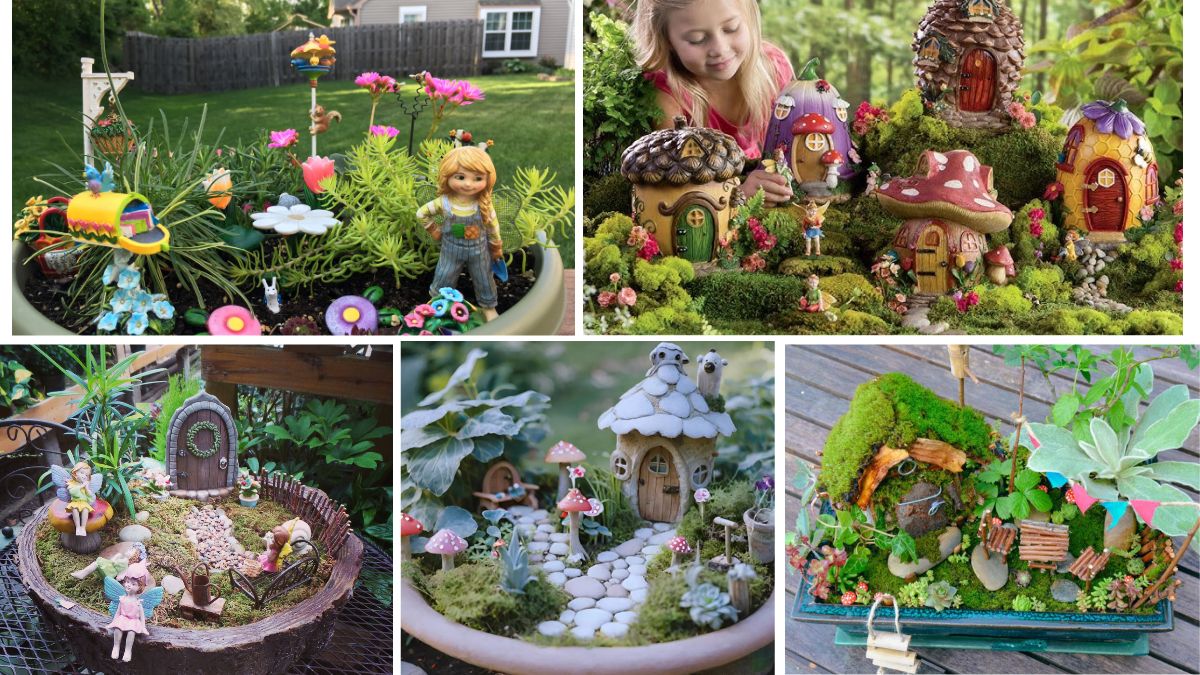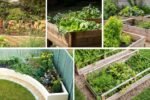Fairy gardens are tiny, enchanting worlds that spark the imagination of children and bring a touch of magic to everyday life. When created indoors, these whimsical gardens become perfect year-round projects for kids to explore gardening, storytelling, and creativity—right from the comfort of their homes. With the right ideas, materials, and guidance, indoor fairy gardens can be fun, educational, and environmentally enriching.
This article explores a wide range of indoor fairy garden ideas for kids, including container choices, miniature accessories, plant suggestions, DIY tips, and how to make it an engaging experience that blends fun with learning.
What Is an Indoor Fairy Garden?
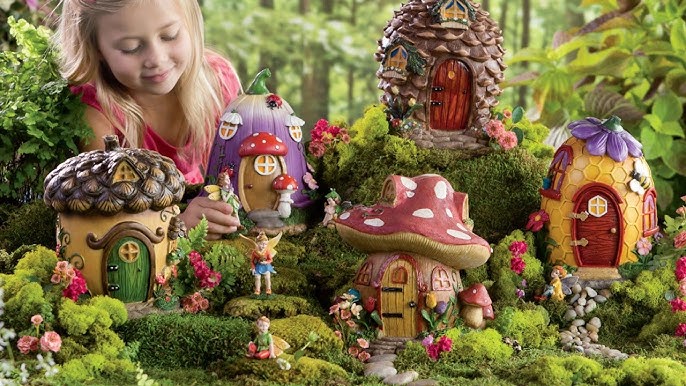
An indoor fairy garden is a miniature landscape set inside a container and placed indoors. It typically includes:
- Small plants like moss, succulents, or ferns
- Tiny fairy figurines, animals, or houses
- Miniature furniture and accessories
- Pebbles, stones, or sand pathways
- A theme or storyline created by the child
Fairy gardens let children create their own magical universe, promoting creativity, nurturing instincts, and fine motor skills.
Benefits of Indoor Fairy Gardens for Kids
Creating an indoor fairy garden is more than just fun—it provides several developmental and environmental benefits:
Educational
- Teaches basic gardening skills
- Introduces plant care and life cycles
- Encourages observation, responsibility, and patience
Cognitive Development
- Enhances imaginative play and storytelling
- Promotes problem-solving and design thinking
Motor Skills & Coordination
- Kids improve their fine motor skills while arranging small pieces, planting, or decorating
Environmental Awareness
- Kids learn to respect nature, understand ecosystems, and explore sustainable living
Choosing the Right Container
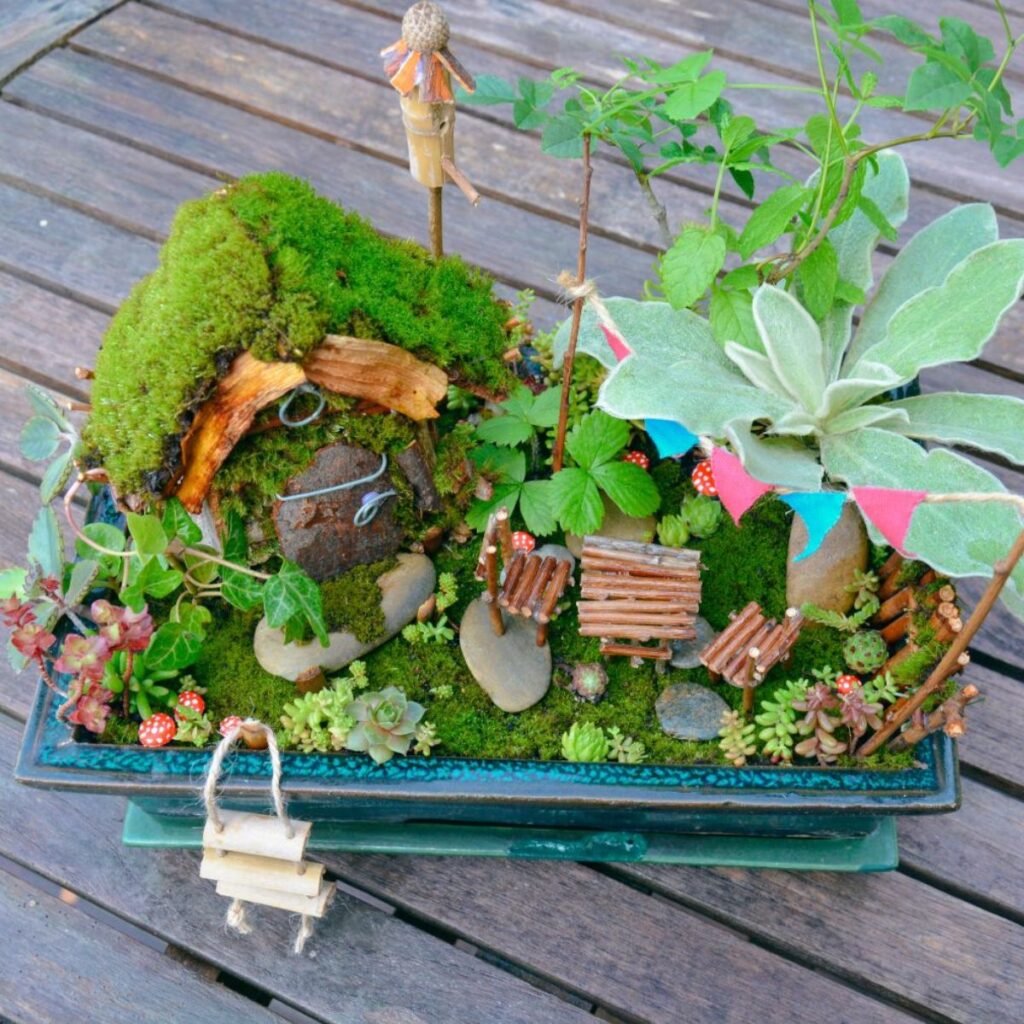
Almost anything that holds soil can become the base of an indoor fairy garden. Here are some fun and kid-friendly container ideas:
| Container | Why It’s Great |
|---|---|
| Shallow ceramic pots | Wide surface area for creativity |
| Large glass jars (terrariums) | Enclosed fairy forests or beach themes |
| Toy wagons or trucks | Fun repurposing of old toys |
| Plastic tubs or bins | Safe and durable for young children |
| Old baking trays or lunchboxes | Easy to decorate and customize |
Let your child choose the container—it gives them ownership and involvement from the beginning.
Best Plants for Indoor Fairy Gardens
Choose small, slow-growing, and low-maintenance indoor plants that are safe for children. Here are some ideal options:
Mosses and Ground Covers
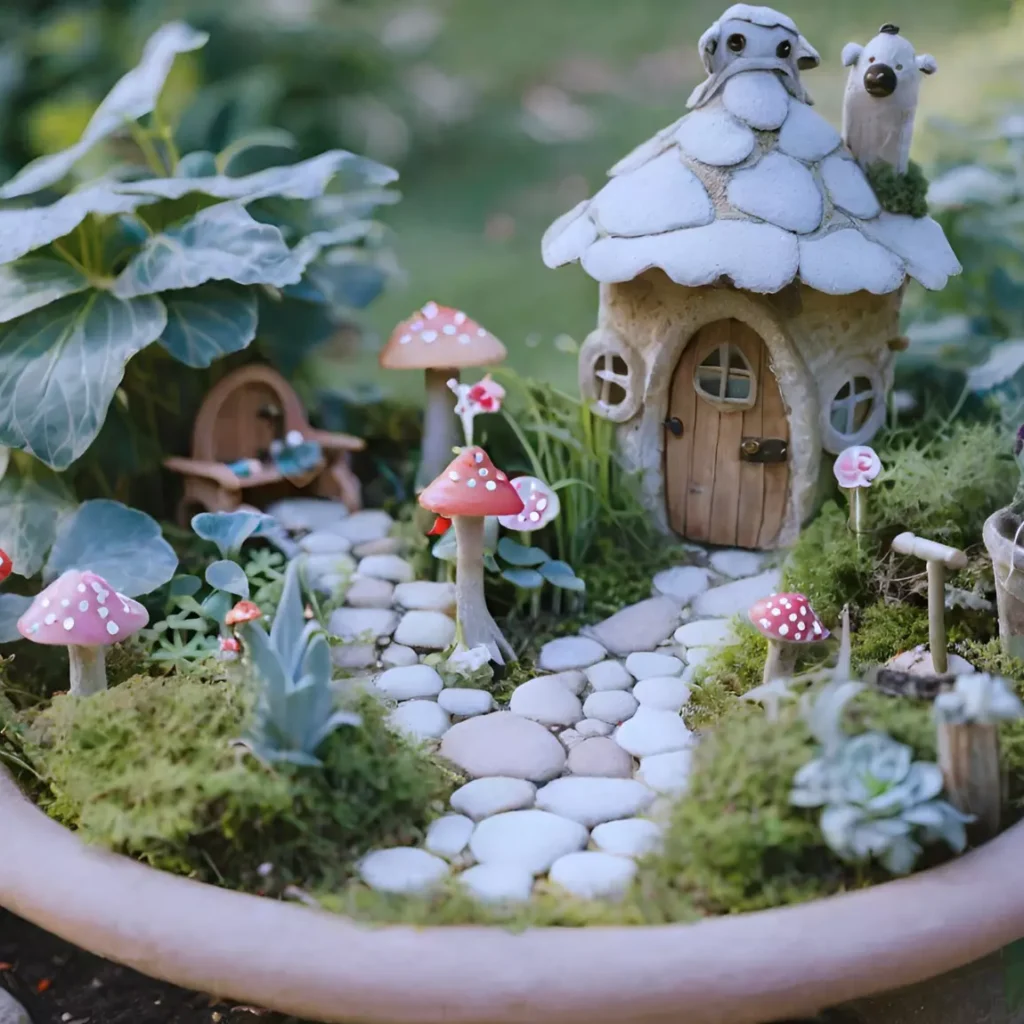
- Irish moss
- Sheet moss
- Baby tears
Succulents and Cacti (for older kids)
- Echeveria
- Haworthia
- Jade plant
Miniature Houseplants
- Spider plant pups
- Pothos cuttings
- Fittonia (nerve plant)
- Mini ferns
For younger kids, you can also skip real plants and use artificial greenery or silk plants to simplify maintenance.
Fairy Garden Themes Kids Will Love
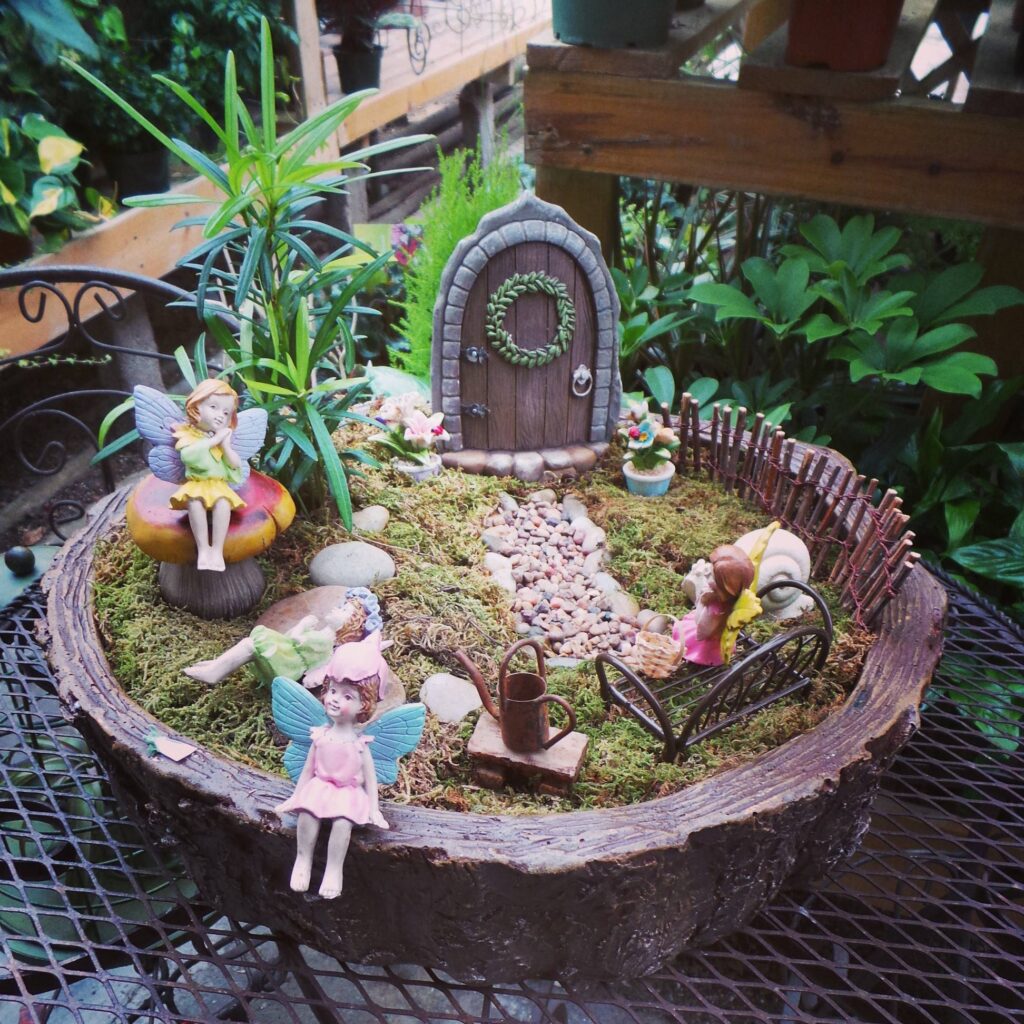
Help children choose a theme to make the process more engaging and imaginative. Here are some creative ideas:
Woodland Fairy Village
Includes tiny cottages, mushrooms, pinecones, and woodland animals.
Beachside Fairy Resort
Use sand, seashells, mini beach chairs, and palm trees for a tropical vibe.
Winter Wonderland
Use cotton for snow, blue pebbles for icy lakes, and glittery fairy wings.
Fantasy Castle Garden
Create a mystical space with dragons, castles, bridges, and magic potions.
Flower Fairy Garden
Use blooming plants and butterflies with fairies dancing among petals.
Each theme lets the child create stories, build characters, and expand the garden over time.
DIY Mini Accessories Kids Can Make
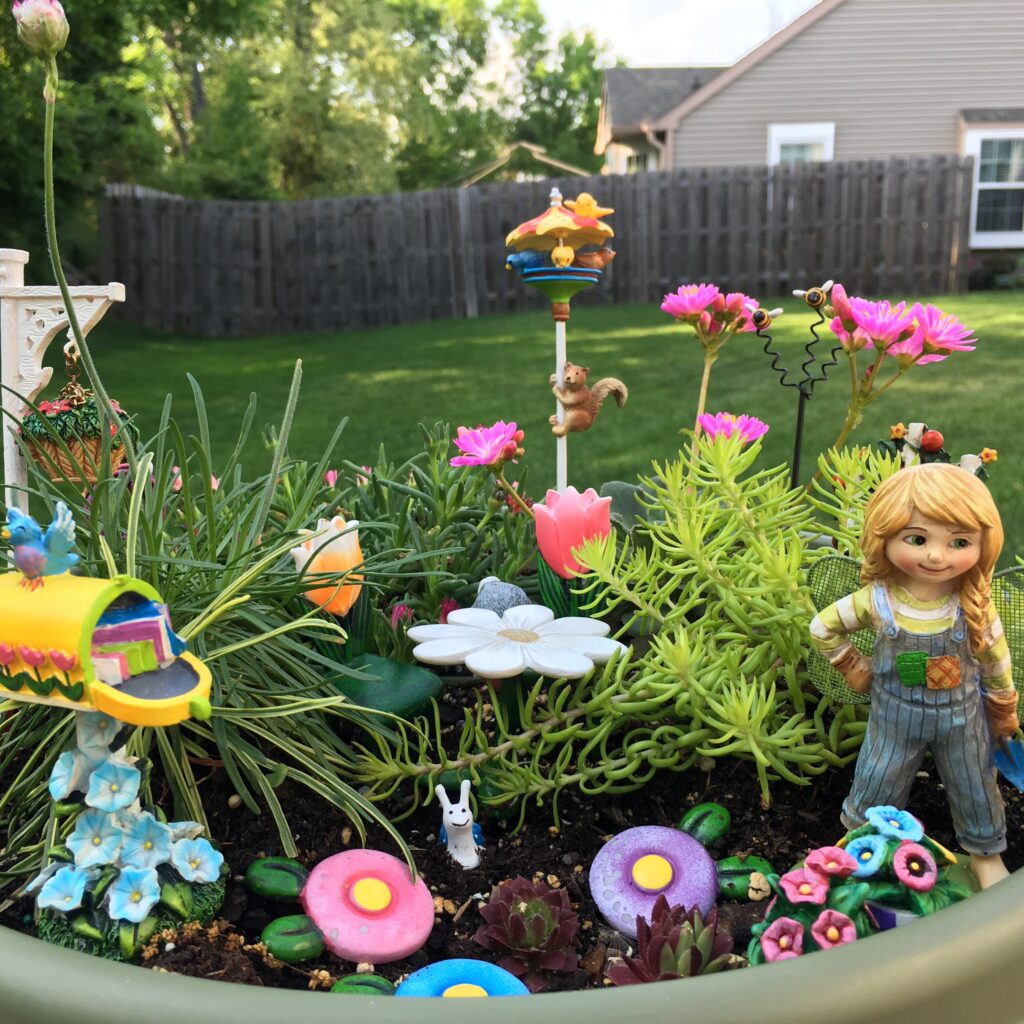
Encourage kids to make their own miniature fairy garden accessories using simple and recycled materials:
| Accessory | DIY Materials |
|---|---|
| Fairy houses | Small cardboard boxes, bottle caps, bark |
| Pathways | Pebbles, buttons, colored rice |
| Benches or swings | Popsicle sticks, twine, old matchsticks |
| Fences | Toothpicks and hot glue |
| Garden signs | Craft sticks and markers |
| Ponds | Tin foil lined with blue beads or gel |
These craft sessions are great bonding activities and develop artistic and construction skills.
Step-by-Step: How to Create an Indoor Fairy Garden
Step 1: Plan the Layout
Draw a basic layout with zones for plants, pathways, fairy houses, and decorations. Let your child choose the theme.
Step 2: Add Drainage
If using a closed container, add a layer of pebbles or small rocks for drainage, followed by a light potting mix.
Step 3: Plant the Greenery
Let your child dig small holes and gently plant the moss, succulents, or miniature ferns.
Step 4: Decorate with Miniatures
Place the fairy home, add pathways, accessories, and fairy figurines. Use natural and craft elements like twigs, pinecones, shells, or glitter.
Step 5: Water and Care
Use a spray bottle to lightly water. Show the child how to care for the garden by watering weekly, rotating the container for even light, and removing dead leaves.
Tips for Success
- Supervise young children while using tools or working with soil and water.
- Use plastic containers and non-toxic materials for safety.
- Keep the garden near a sunny window or under grow lights.
- Label each plant or fairy item to encourage learning and memory.
- Refresh the garden with seasonal themes like Halloween, Christmas, or Spring fairies.
Making It a Learning Project
Turn the fairy garden into an educational opportunity by integrating:
- Botany lessons: Teach children about roots, leaves, and plant needs
- Storytelling: Let kids write a story about their fairy world
- Art projects: Design flags, fairy doors, or signs
- Recycling lessons: Use only upcycled and eco-friendly materials
Many parents and teachers use indoor fairy gardens as STEM/STEAM learning tools in classrooms and homeschool settings.
Benefits of Keeping It Indoors
- Year-round gardening, regardless of weather
- No risk of outdoor pests or harsh sunlight
- Easier to monitor and maintain
- Doubles as indoor décor and conversation starter
- Perfect for apartment living or limited spaces
Common Mistakes to Avoid
| Mistake | Solution |
|---|---|
| Overwatering plants | Use a spray bottle or dropper for controlled moisture |
| Using large plants | Stick to miniature or slow-growing species |
| Crowding too many accessories | Keep it simple for better aesthetic and plant space |
| No drainage in containers | Add pebble layers and ensure proper water flow |
| Neglecting sunlight | Place near windows or use LED grow lights |
Fairy Garden Journal for Kids
Encourage children to keep a fairy garden journal, where they can:
- Draw weekly garden changes
- Write about new fairy characters
- Record plant growth
- Paste photos of their creations
This fosters writing, observation, and reflection skills.
Conclusion
An indoor fairy garden is more than just a cute project—it’s a magical learning journey for kids. It helps them connect with nature, explore their imagination, and develop responsibility, all while having loads of fun. By combining creativity with basic gardening, children get a sense of accomplishment and joy watching their tiny world thrive.
So grab a pot, collect some pebbles, plant a bit of moss, and let the fairies move in! It’s a beautiful way to turn everyday materials and free time into a lifelong love for plants, creativity, and sustainability.
